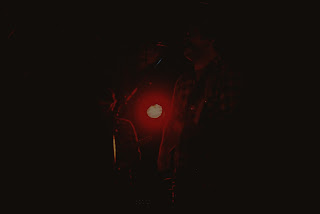Photography, to say the least, is not my forte. Though it is something that has always struck an interest with me, and something that I’ve always thoroughly enjoyed, have never own a “professional” camera, nor taken any professional lessons in using cameras appropriately. This being said, I do believe that this is how most of the world’s famous photographers start. Learning as you go along, you develop a connection with the topic, you gain an understanding of what looks good, and what you want to steer away from.
After borrowing a Canon Rebel SLR camera for a week, I began to understand what I preferred, and what I felt was a beautiful picture. Though my focus was sometimes sidetracked, I quickly realized that what I enjoyed the most was incorporating the sky in my pictures. To me the sky is a beautiful background to any subject, and a completely natural one at that. It has the ability to set the mood for your picture depending on the weather, and I feel like mood is a major component to photography.
One photographer whose work clearly uses the sky as a backdrop would be Alan Aubry. Alan Aubry is a French photographer, who graduated from the Art College of Rouen, France in 1998. I found that most of his architectural photos are often taken at a point of view where the sky is very evident. It allows the subject to pop, and I think it’s a very clever way of using natural beauty to enhance your photos. This is something that I also attempted to do with my own photographs, though the week had given me some rather gloomy weather, I feel like as though it had enhanced the mood of my photos drastically. The photography of the tip of the kissing bridge matched with the dark clouded day, I feel really brought out the old rustic feel of this Guelph landmark, which is something I really wanted to accomplish. Likewise the beautiful blue skies that are displayed in the photograph of the Albion Hotel sign, had really worked hand in hand with the royal blue of the sign, allowing the subject to pop in its own way. Finally my picture of the tree branches sitting against the blue sky is a great display of how this natural background helps enhance a photograph.
Another wonderful photographer that uses the beauty of nature as his main focus is Ansel Adams. Ansel Adams was a photographer and environmentalist who was born in San Francisco, California. After viewing some of his photographs it was clear to me that he too enjoyed using the natural beauty of nature’s ways. I feel like my picture of the tipped over canoe is a good depiction of allowing the natural beauty of nature to shine through in photography. This was a canoe that I had found which had been out all winter stuck at the shore of Speed River in Guelph. The harsh winter had down some beautiful damage to the canoe and I feel like my photograph had captures it quite wonderfully. Another one of my pictures which displays the doorway of an older house in Guelph, shows again the wear and tear of weather and time.
It’s beautiful to see what nature is capable of, even in its smallest forms. It has the ability to work as a backdrop to our photographs, or help display the age of an object. Nature is there for us to enjoy and explore through photographs, and that is something that I had learned through taking these photographs. Gaining a new appreciation for how beautiful the world really is.




















